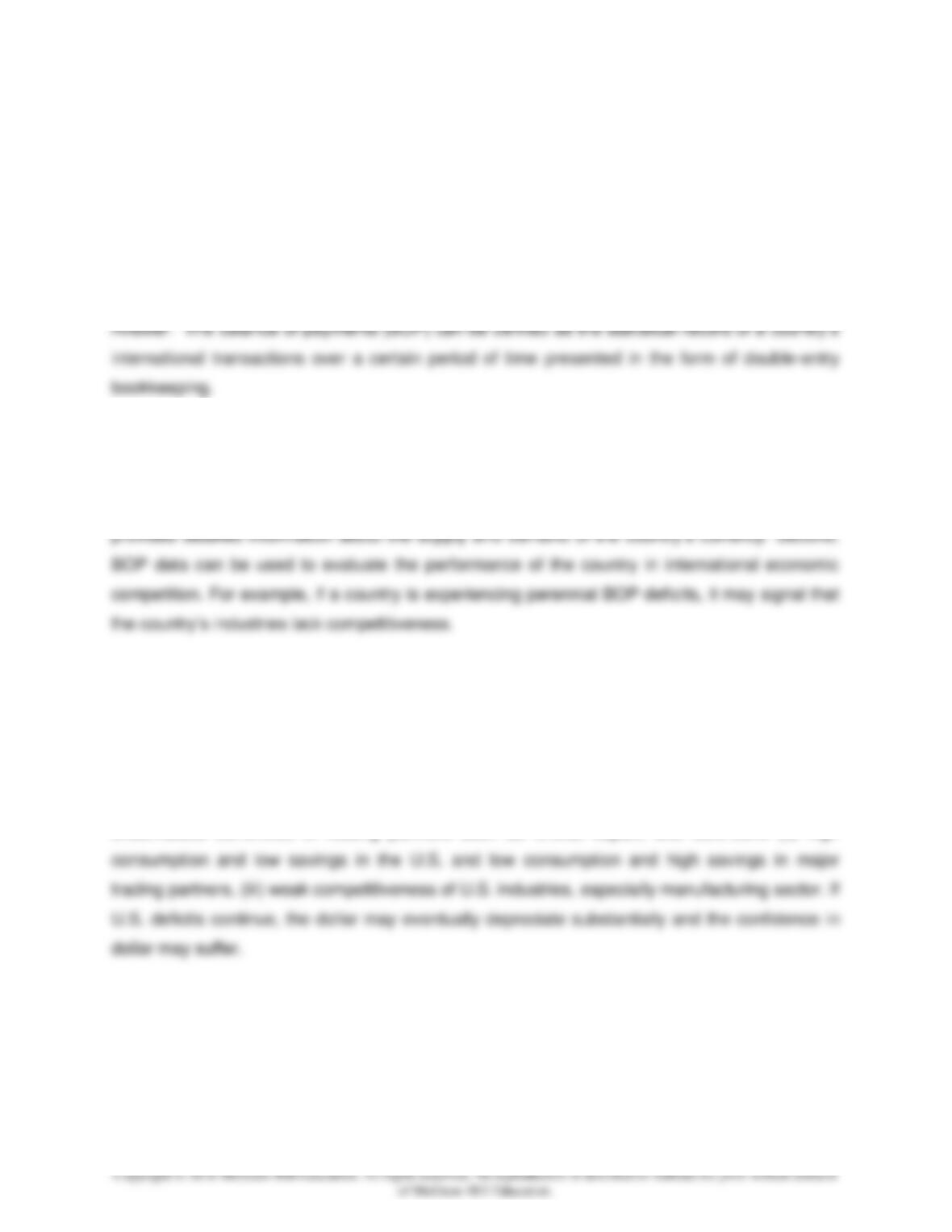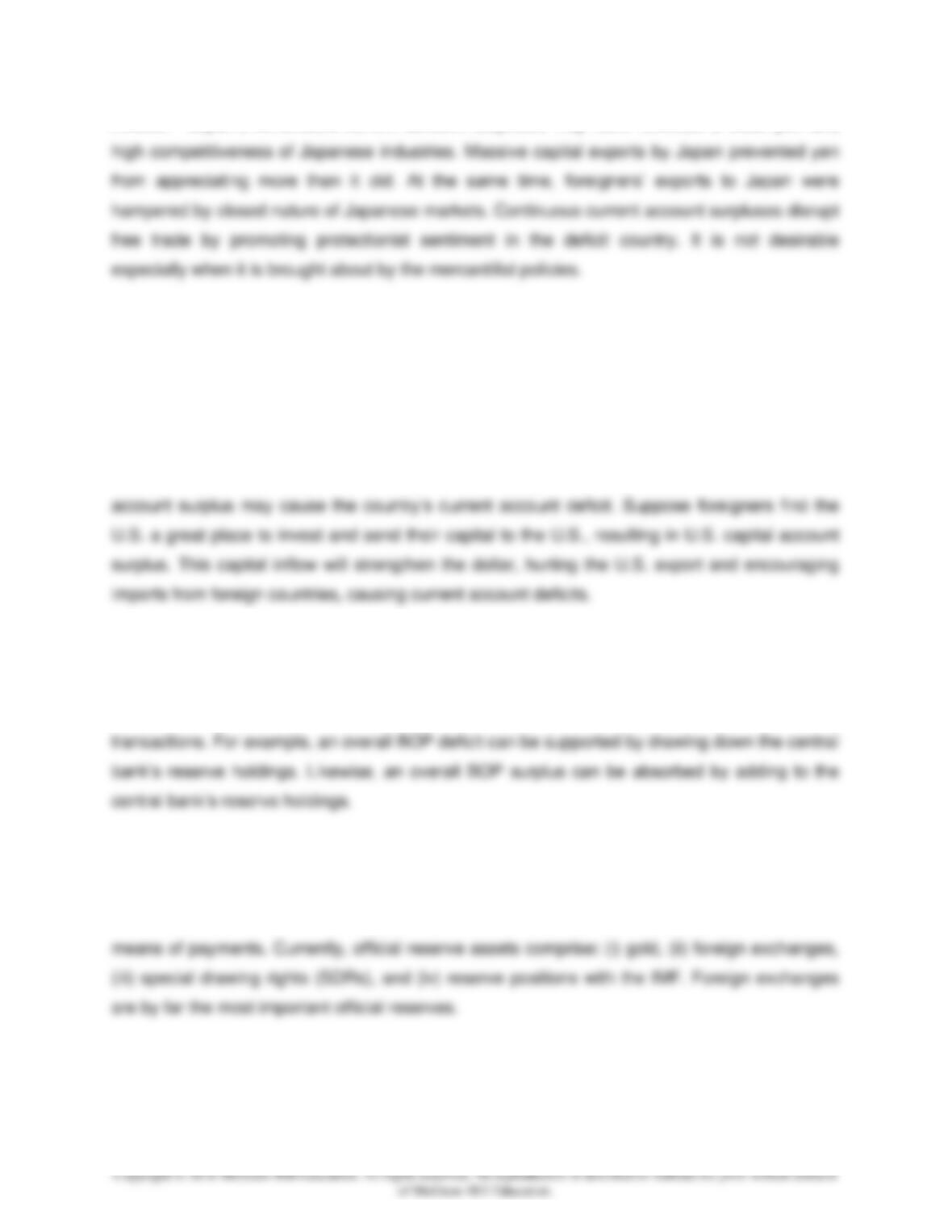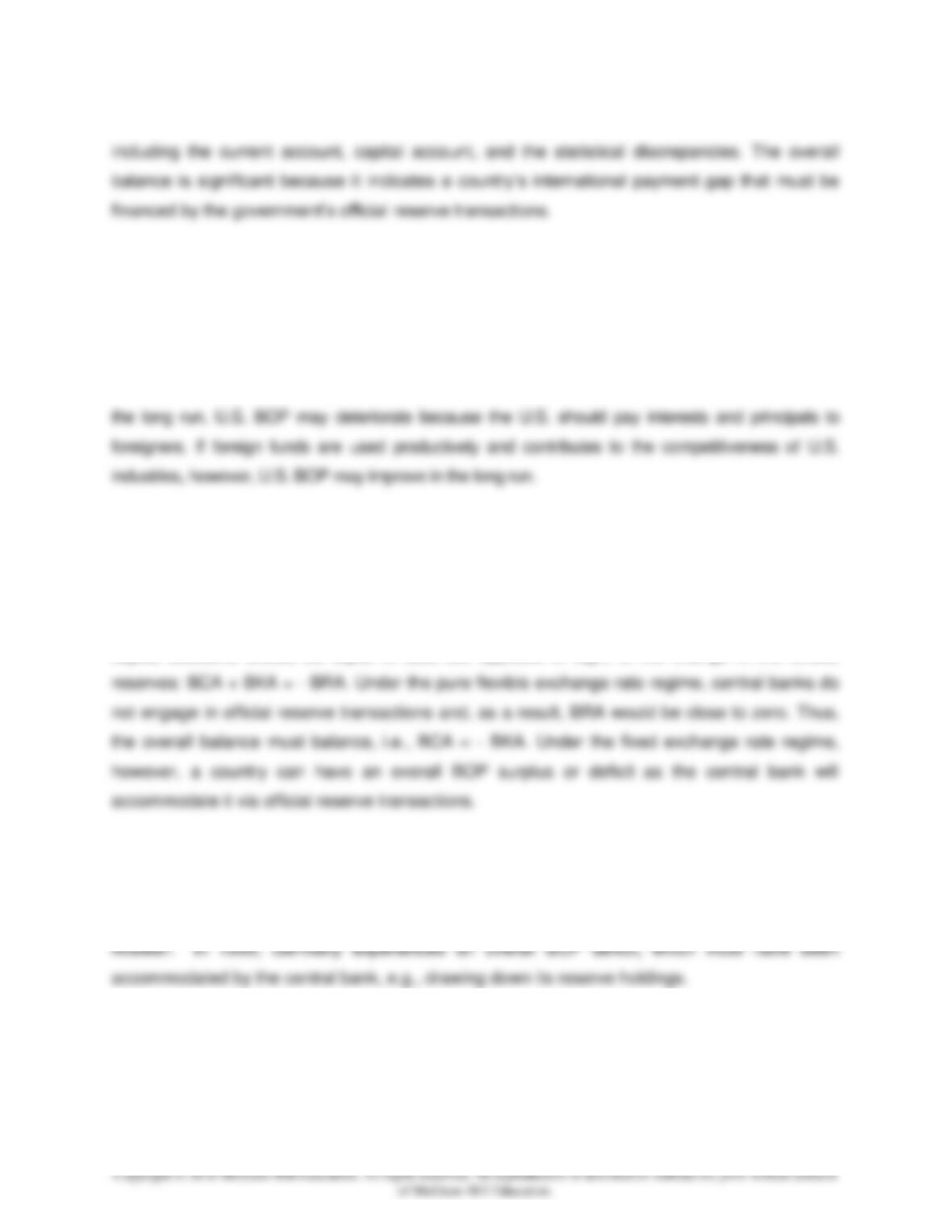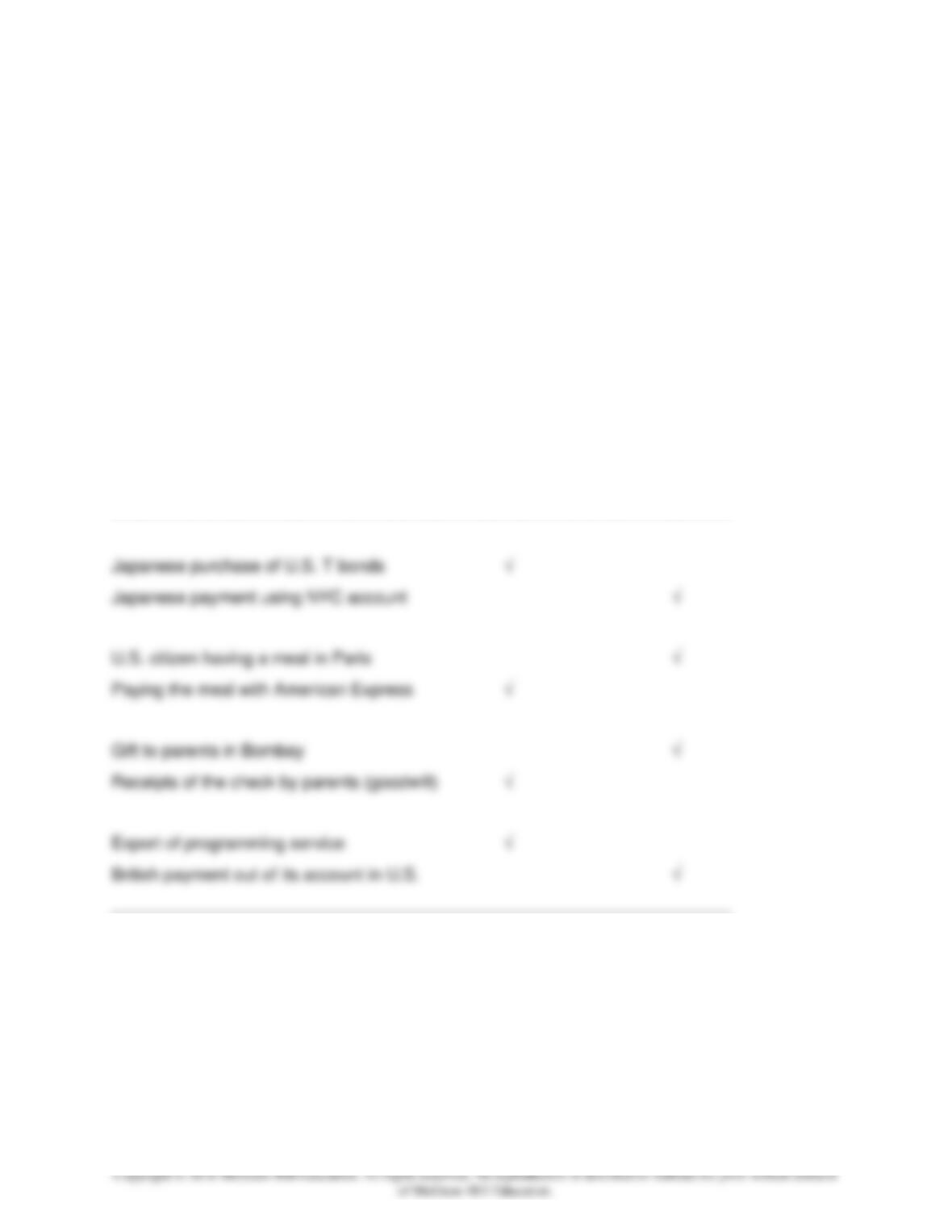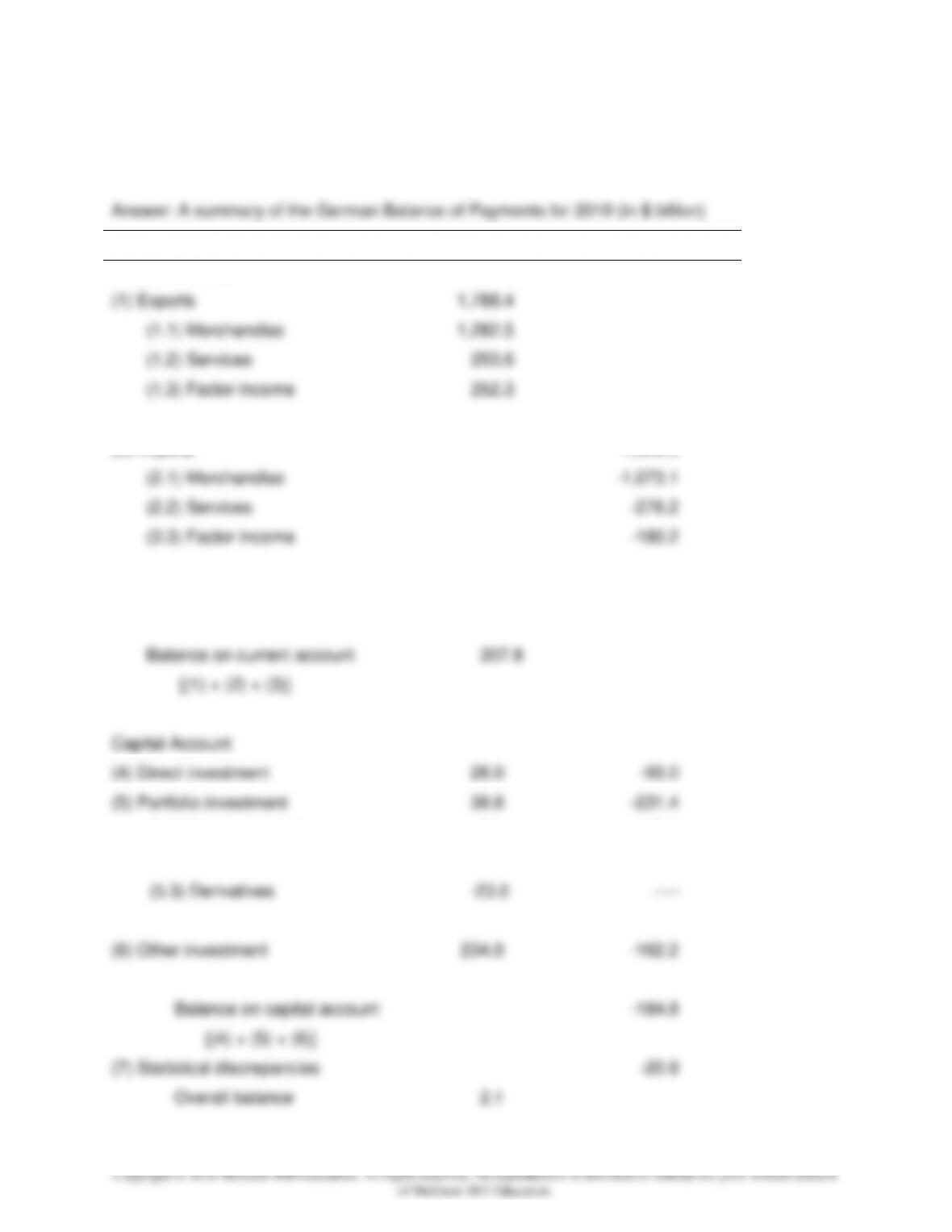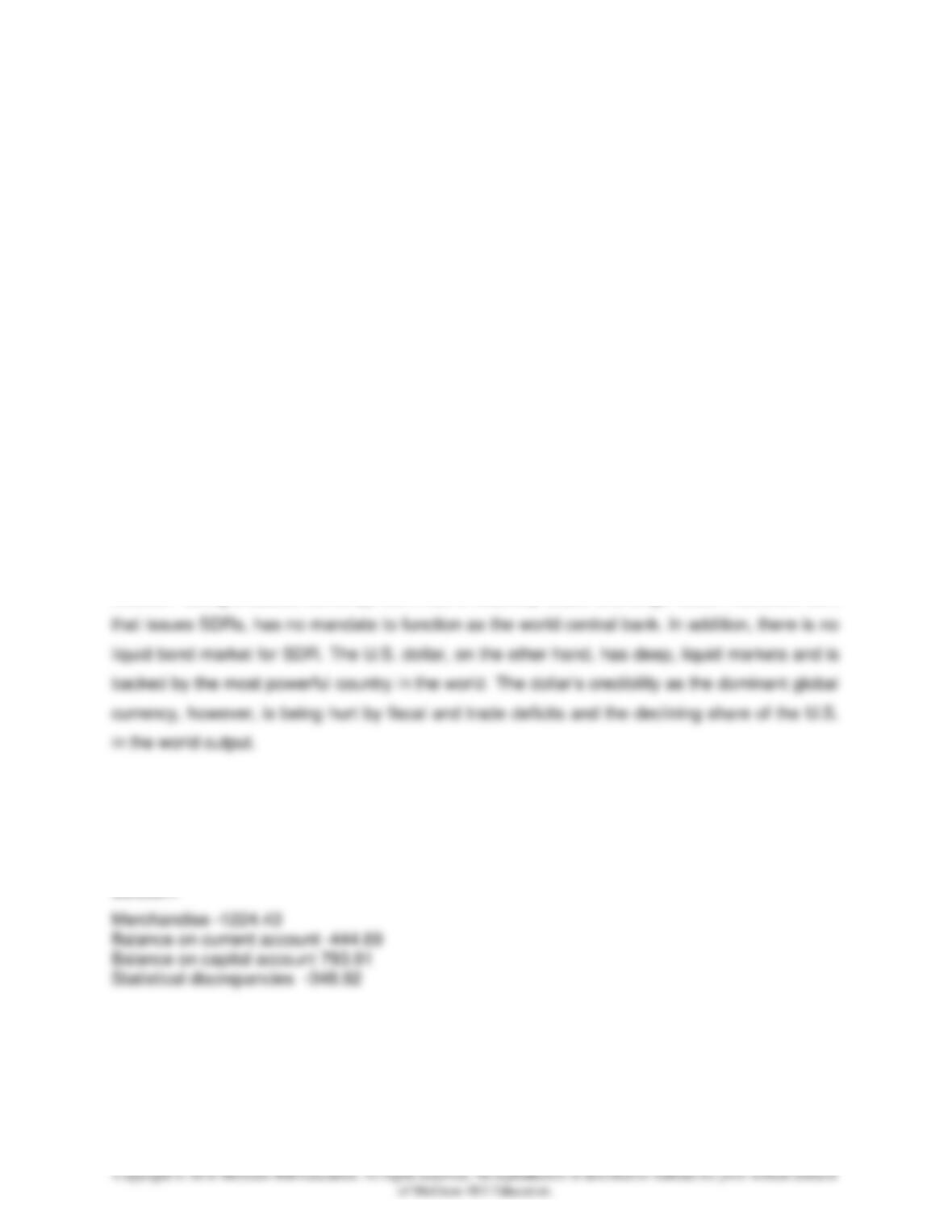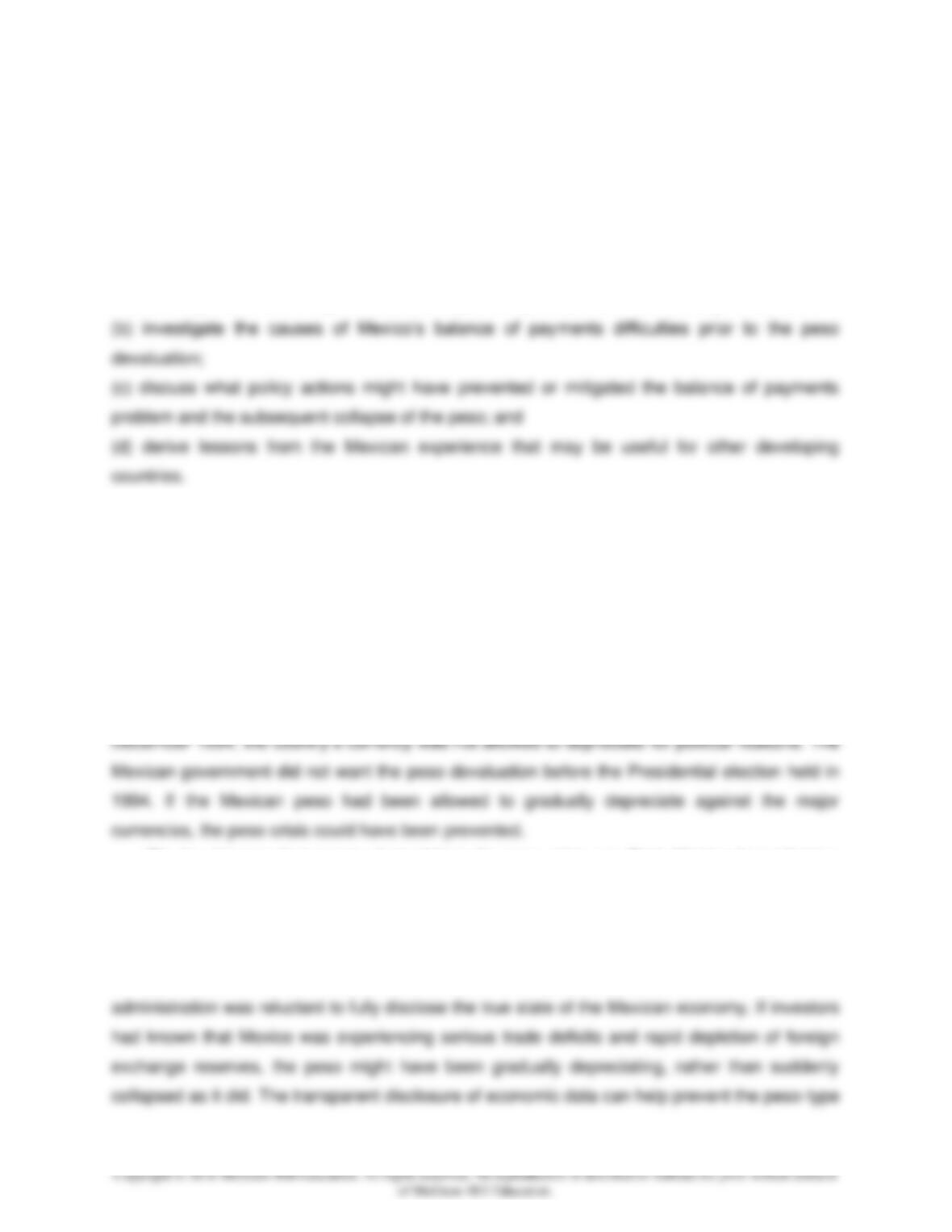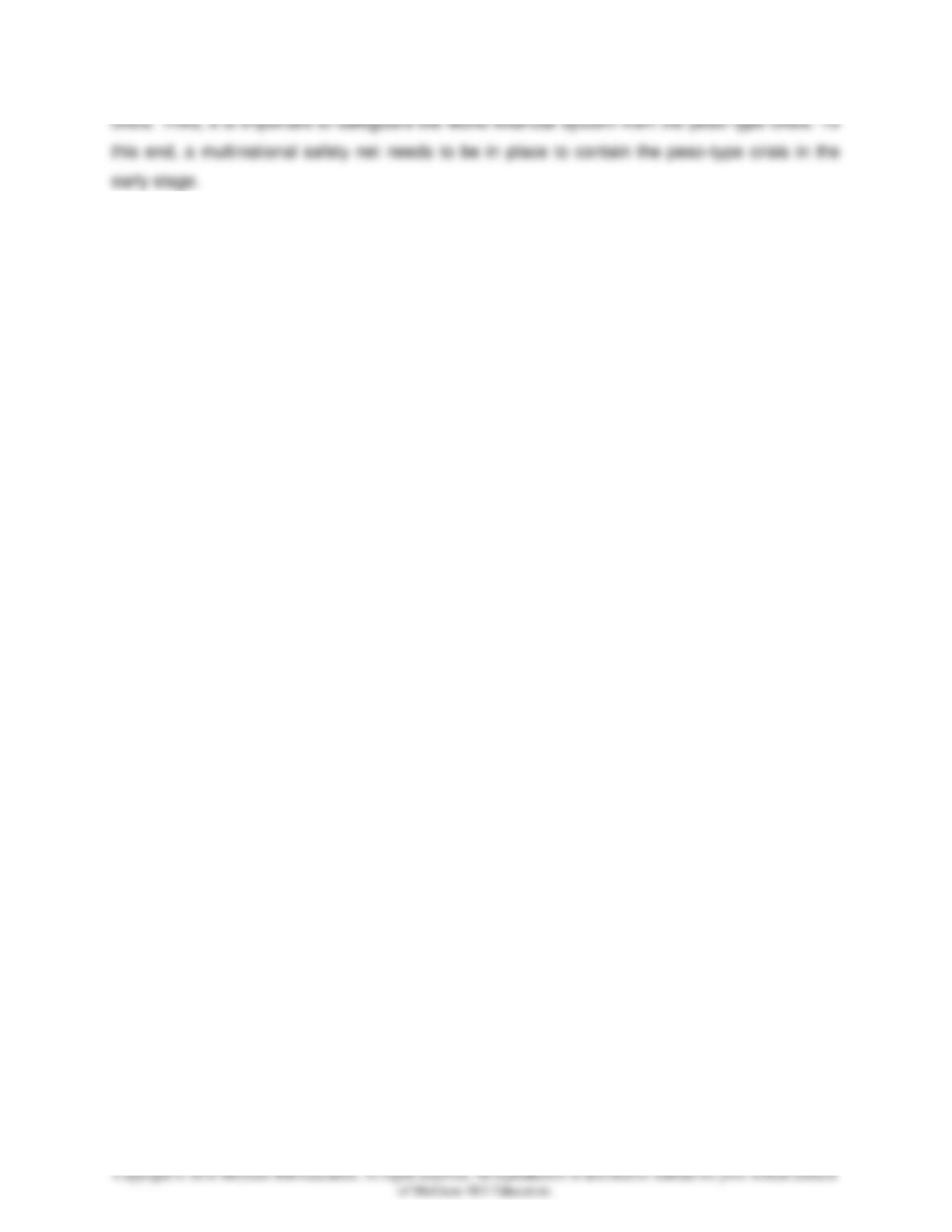holdings and a major currency devaluation in December 1994, followed by the decision to freely
float the peso. These events also brought about a severe recession and higher unemployment
in Mexico. Since the devaluation, however, the trade balance has improved.
Investigate the Mexican experiences in detail and write a report on the subject. In the
report, you may:
(a) document the trend in Mexico’s key economic indicators, such as the balance of payments,
the exchange rate, and foreign reserve holdings, during the period 1994.1 through 1995.12.;
In your report, you may identify and address any other relevant issues concerning Mexico’s
balance of payment problem. International Financial Statistics published by IMF provides basic
macroeconomic data on Mexico.
Suggested Solution to Mexico’s Balance-of-Payments Problem
To solve this case, it is useful to review Chapter 2, especially the section on the Mexican
peso crisis. Despite the fact that Mexico had experienced continuous trade deficits until
The key lessons that can be derived from the peso crisis are: First, Mexico depended too
much on short-term foreign portfolio capital (which is easily reversible) for its economic growth.
The country perhaps should have saved more domestically and depended more on long-term
foreign capital. This can be a valuable lesson for many developing countries. Second, the lack
of reliable economic information was another contributing factor to the peso crisis. The Salinas
